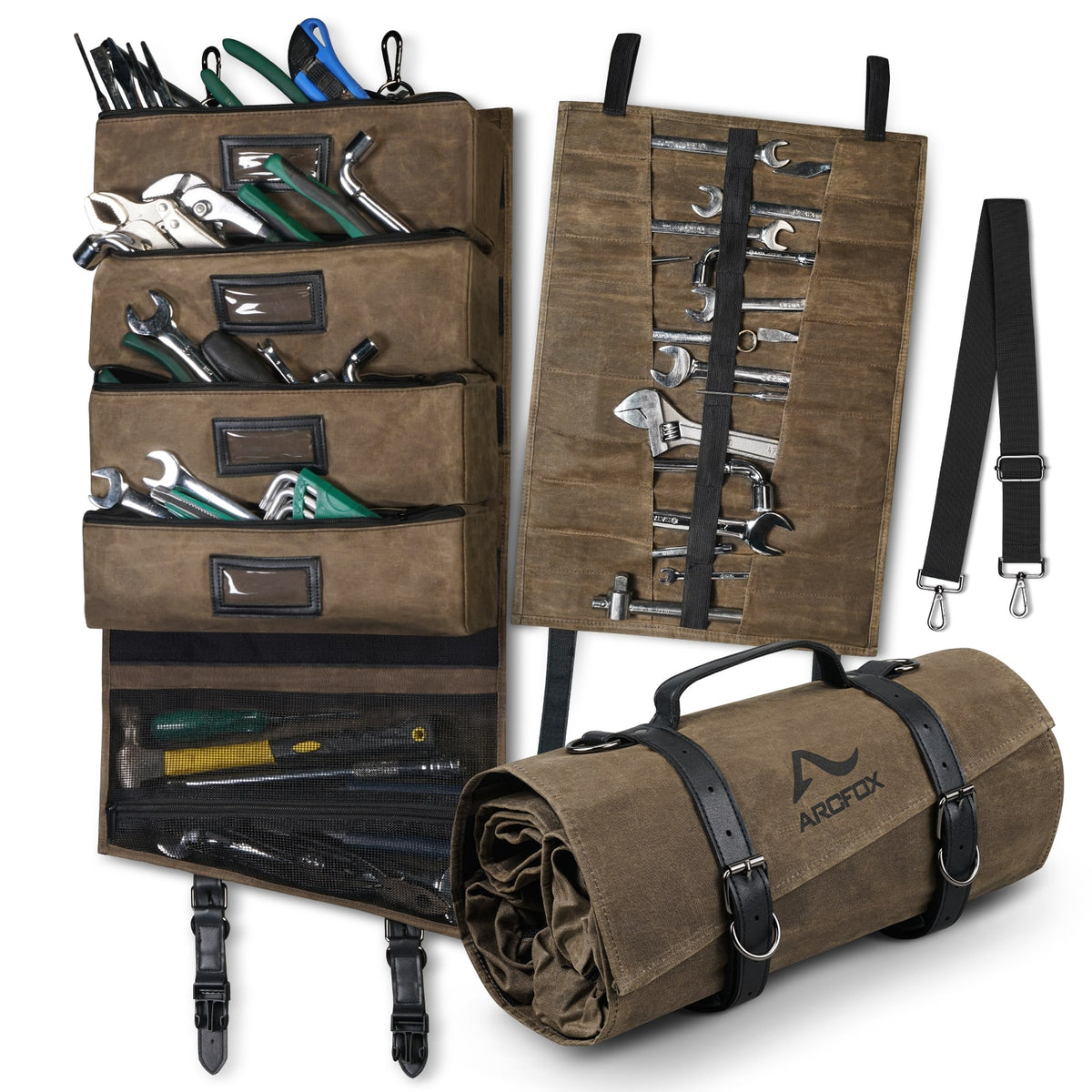Is your tool bag a chaotic mess? Do you spend more time finding the right tool than actually using it? A dirty, disorganized tool bag isn’t just frustrating—it can damage your tools and even pose a safety hazard. Luckily, a thorough cleaning and organization can quickly restore functionality. This guide will show you how to clean your tool bag, from a quick wipe-down to a deep clean, ensuring it stays in top shape for years to come.
This comprehensive guide goes beyond just removing dirt. We’ll cover everything from identifying the best cleaning methods for different bag materials, to removing rust and grime from tools, and finally, implementing organization strategies to prevent future messes. By the end, you’ll have a clean, organized tool bag ready to tackle any project.
Understanding Your Tool Bag Material

Before you start cleaning, it’s crucial to identify what your tool bag is made of. Different materials require different approaches.
Common Tool Bag Materials
- Canvas: Durable and often waxed for water resistance. Requires gentle cleaning to avoid damaging the wax.
- Nylon: Water-resistant and easy to clean. Can withstand more robust cleaning methods.
- Polyester: Similar to nylon, but less durable. Still relatively easy to clean.
- Leather: Requires specialized leather cleaners and conditioners to maintain its quality and prevent cracking.
Quick Clean: Daily/Weekly Maintenance
This method is perfect for preventing major build-up and keeping your tool bag relatively clean.
Method 1: Surface Wipe-Down
Diagnosing the Issue
A quick wipe-down is sufficient for removing dust, light dirt, and debris.
Fix Steps
- Empty the Bag: Remove all tools and loose items.
- Brush Away Loose Debris: Use a soft-bristled brush to remove dirt, sawdust, and other particles.
- Wipe Down Exterior: Dampen a microfiber cloth with mild soap and water. Wipe down the exterior of the bag. For canvas, avoid saturating the material.
- Wipe Interior: Use a separate clean cloth to wipe down the interior pockets and compartments.
- Air Dry: Allow the bag to air dry completely before replacing tools.
Testing
Visually inspect the bag for any remaining dirt or grime. Repeat if necessary.
Deep Clean: Monthly/As Needed
For a more thorough cleaning, follow these steps.
Method 2: Comprehensive Cleaning
Diagnosing the Issue
This is for removing stubborn dirt, grease, and grime that builds up over time.
Fix Steps
- Empty and Brush: As in the quick clean, empty the bag and brush away loose debris.
- Material-Specific Cleaning Solutions:
- Canvas: Mix a small amount of mild dish soap with lukewarm water. Use a soft brush to gently scrub the canvas.
- Nylon/Polyester: Use a mild all-purpose cleaner diluted with water. Scrub with a soft brush or cloth.
- Leather: Use a leather cleaner specifically designed for the type of leather your bag is made from. Follow the manufacturer’s instructions.
- Spot Treat Stains: For stubborn stains, apply a small amount of cleaning solution directly to the stain and gently scrub.
- Rinse (If Applicable): If using a soapy solution, rinse with a damp cloth. Avoid saturating canvas or leather.
- Air Dry: Allow the bag to air dry completely in a well-ventilated area. Do not use a dryer.
Testing
Ensure all cleaning solution residue has been removed. Inspect for any remaining stains.
Method 3: Cleaning Tool Pockets & Compartments
Diagnosing the Issue
Tool pockets often collect metal shavings, grease, and grime.
Fix Steps
- Vacuum: Use a small vacuum attachment to remove loose debris from pockets and compartments.
- Brush: Use a stiff-bristled brush to scrub away stubborn grime.
- Degreaser (Optional): For greasy pockets, apply a small amount of degreaser (ensure it’s compatible with the bag material) and scrub.
- Wipe Clean: Wipe clean with a damp cloth.
Cleaning the Tools Themselves
A clean tool bag is only half the battle. Cleaning your tools is equally important.
Rust Removal & Prevention

- Light Rust: Use a wire brush or steel wool to remove light rust. Apply a rust inhibitor afterwards.
- Heavy Rust: Soak the tool in a rust remover solution (following manufacturer’s instructions).
- Prevention: Regularly wipe tools with a light oil to prevent rust.
Grime & Grease Removal
- Degreaser: Apply a degreaser to tools and scrub with a brush.
- Soap and Water: For less stubborn grime, use warm soapy water.
- Dry Thoroughly: Always dry tools completely after cleaning to prevent rust.
Pro Tips for a Spotless Tool Bag

- Use Tool Rolls: Tool rolls keep tools organized and prevent them from scratching each other.
- Individual Pouches: Use small pouches to store small parts, screws, and other items.
- Absorbent Material: Place a layer of absorbent material (like a microfiber cloth) at the bottom of the bag to catch spills and debris.
- Regularly Empty and Sort: Make it a habit to empty and sort your tool bag every few weeks.
- Avoid Overfilling: An overfilled bag makes it difficult to find tools and can damage the bag itself.
- Wax Canvas Regularly: If you have a waxed canvas bag, re-wax it periodically to maintain its water resistance.
When to Call a Professional
- Severe Damage: If your tool bag is severely damaged (rips, tears, broken zippers), consider professional repair or replacement.
- Leather Restoration: For valuable leather tool bags, professional leather restoration can be worth the investment.
FAQ
Q: Can I use bleach to clean my tool bag?
A: No, bleach can damage most tool bag materials and discolor them. Stick to mild soap and water or material-specific cleaners.
Q: How do I remove oil stains from canvas?
A: Sprinkle baking soda onto the oil stain and let it sit for several hours. Vacuum up the baking soda. Repeat if necessary.
Q: What’s the best way to store my tool bag?
A: Store your tool bag in a cool, dry place away from direct sunlight.
Q: How often should I clean my tools?
A: Clean your tools after each use, or at least weekly, to prevent rust and maintain performance.
Alternative Solutions
If you’re short on time, consider using pre-moistened cleaning wipes designed for tools or specific bag materials. However, these are often less effective for deep cleaning.
Keep Your Tool Bag Running Smoothly
By following these steps, you can keep your tool bag clean, organized, and in excellent condition for years to come. Remember to regularly maintain your bag and tools, and don’t hesitate to seek professional help when needed.
Have you successfully cleaned your tool bag? Share your favorite tips and tricks in the comments below to help other readers!




